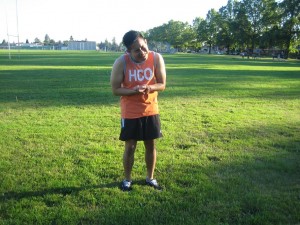A dislocated knuckle joint is a condition where the bones of the finger moves apart and the ends of the bones are not aligned. Knuckles are joints in the fingers that can be seen when clenching the hand and making a fist. It can be dislocated by hitting them on hard surfaces such as punching on a metal or a concrete wall on purpose or by accident.
During sports, such as baseball or basketball, the outstretched fingers are prone to be dislocated when caught in the sweater or pads. It usually happens when the fingers are bent backwards beyond the normal range of movement. The middle knuckle of the index, middle and the little finger are prone a dislocated knuckle joint.
Symptoms of a dislocated knuckle joint
- The bones of the fingers are deformed or crooked
- Severe pain and swelling of the knuckle of the affected finger
- The affected finger looks pale, scraped or bruised
Severe pain and swelling of the knuckle of the affected finger - The affected finger can be bent in a strange angle
- Tingling and numbness can be felt on the affected knuckles
Treatment
- Remove any jewelry in the finger to prevent difficulty in removal when the area is swollen.
- Apply an ice pack on the affected area for at least 10-15 minutes to lessen the pain and swelling on the first 2 days after the injury. Avoid applying the pack directly on the skin to prevent frostbite. Wrap the ice pack with a towel or cloth before placing on the area. After 2 days, apply a heating pad on the area for at least 15 minutes every day until pain is lessened.
- Elevate the affected finger at least 30 minutes above the level of the heart to lessen the flow of blood and swelling. Elevate the area every 3-4 hours.
- Take the prescribed anti-inflammatory medication to lessen the pain and swelling.
- Realigning of the dislocated knuckle joint by the doctor. The affected person is given anesthesia to prevent pain when realigning the affected knuckle joint.
- Once it is already aligned, a splint is placed on the area for about 2 weeks for support, prevent unnecessary movement and promote healing of the condition. Splinting the finger is done for a brief period to prevent the affected area from getting stiff.
A broken knuckle joint usually heals in about 3 weeks and takes 4 months for the pain to totally disappear.
Tips
- Wear protective gloves
- If possible, avoid getting the finger trapped in objects such as basketball nets, athletic sweaters and football helmets.
- Remove rings and other jewelries when performing physical activities, participating in sports and handling machineries.
Disclaimer / More Information
The material posted on this page on dislocated knuckle joint is for learning purposes only. Learn to recognize and manage joint injuries including a dislocated knuckle joint by taking a first aid and CPR class with one of our training providers.

